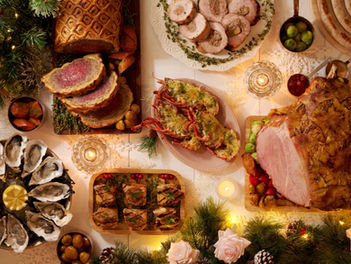Great Barrier Reef coral nurture programme bears fruit
- Asia Family Traveller
- Feb 28, 2022
- 2 min read

Checking the corals at Opal Reef in Queensland, Australia (picture courtesy Calypso Productions).
A four-year partnership between the scientific community and the tourist industry to nurture Australia’s Great Barrier Reef is beginning to bear fruit.
Ecologists, biologists and tour operators joined forces in 2018 to future-proof the reef against extreme weather events following a coral bleaching event. In total, six Queensland tourism operators, led by Wavelength Reef Cruises, planted 70,000 coral fragments across 27 reefs. It has now been revealed that the programme has achieved an 85% survival rate with spawning of the first out-plants.
Scientists say the sites used in the Coral Nurture Programme are showing “spectacular” growth following two years of good growing conditions. Lead researcher professor David Suggett described the programme as an “unprecedented success” following a two-week expedition to Opal Reef last week.
“It’s been a year since we’ve been able to visit these specific reef sites and they’re looking spectacular,” he said. “The coral is looking very vibrant. The collective action of operators planting tens of thousands of corals means we can now start to understand how, when and why coral replanting is successful. That’s now feeding forward to the new stewardship-based management for the Great Barrier Reef.”
The programme is funded by the Australian Government’s Reef Trust and the Great Barrier Reef Foundation and is a joint partnership between scientists at University of Technology Sydney and Port Douglas-based Wavelength Reef Cruises.
The Coral Nurture Progamme was born out of the 2016 bleaching when marine biologists John and Jenny Edmondson of Wavelength Reef Cruises attempted to help tourism operators build reef resilience. Other Cairns and Port Douglas-based reef operators have since joined the programme, as well as operators from the Whitsundays further south.
“After the bleaching in 2016, it was difficult to come out here and see it all,” said Jenny Edmondson. “We came up with ideas of how to have a cheap and fast way of out-planting large quantities of coral and returning the sites back to what they used to be like.”
Staff from reef tourism boats tend to coral nurseries while tourists enjoy the reef nearby. Broken coral fragments are grown onto nurseries suspended two metres below the ocean surface. A ‘Coralclip’ device attaches coral to the reef without the need for chemical bonding agents. The Coralclip is no more than a metal spring clip which is nailed to the reef rock and a coral fragment placed under it. As long as the fragment stays still for around six weeks, it self-attaches to the reef.
According to Suggett, the first fragments planted in 2018 are now spawning. “This means all the planting activity is able to start rehabilitating the reef on its own.”
It’s hoped that an uptick in tourism post-pandemic will increase the number of reef trips which in turn will boost the programme further still.
“A viable tourism industry, with travellers booked on regular departures, is fundamental to the ongoing success of the programme,” said Edmondson.
More dive stories...
Stepping up conservation efforts in the South Pacific.
One family's adventures exploring the 'big blue' in the Philippines.
Keep up to date with all the latest travel news by following Asia Family Traveller on Facebook.


















